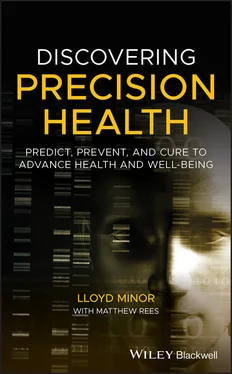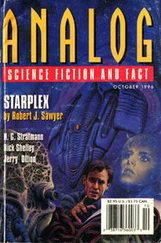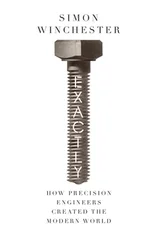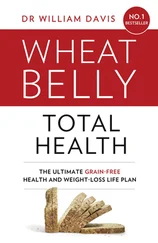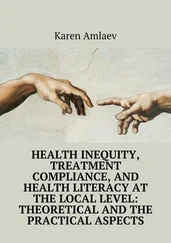1 ...7 8 9 11 12 13 ...17 Although I will emphasize health care in later chapters, I want to focus here on the health care system and touch on some of the features that people find unsatisfactory. I am certainly familiar with the system’s inadequacies and will start with something that reflects those inadequacies: how it has been insulated from the technology disruptions that have shaken up countless other industries.
One way to gauge the slow pace of innovation in how the health care system operates is the absence of any game‐changing products or companies akin to, say, Google, Uber, Airbnb, Amazon, etc. I certainly recognize the obstacles to disruption, such as extremely complex billing systems, restrictive government regulations, and the high stakes associated with any innovation that involves the care and treatment of human lives. Nonetheless, the effect is striking: how health care is delivered, and the environments in which medicine is practiced, have not changed much since I graduated from medical school in 1982. Yes, there have been some modifications, such as the adoption of electronic health records (which have brought their own set of issues, as I describe below), but the foundation of the system remains the same. That’s problematic for everyone involved, but primarily for patients and the health care professionals who serve them.
THE “SOPHISTICATED” TECHNOLOGY IN DOCTORS’ OFFICES
Emblematic of the lack of innovation is the fact that many (if not most) physicians’ offices still rely on a device that disappeared in just about every other industry two decades ago: the fax machine. “It’s been the most sophisticated piece of technology in many doctors’ offices for decades,” points out Bill Evans, CEO of the venture capital firm Rock Health. Here’s how one journalist, Sarah Kliff, writing in 2017, described the situation:
In the medical sector, the fax is as dominant as ever. It is the cockroach of American medicine: hated by doctors and medical professionals but able to survive—even thrive—in a hostile environment. By one private firm’s estimate, the fax accounts for about 75 percent of all medical communication. It frustrates doctors, nurses, researchers, and entire hospitals, but a solution is evasive.
Kliff goes on to point out that one of the reasons fax‐based communications endure in the medical field is that hospitals don’t necessarily want to share patient information with each other:
While patients might want one hospital to exchange information with another hospital, those institutions have little incentive to do so. A shared medical record, after all, makes it easier to see a different doctor. A walled garden—where records only get traded within one hospital system—can encourage patients to stick with those providers [19].
The persistence of the fax machine (and the paper that accompanies it) demonstrates how technology has often been treated as a cost of doing business and not a tool for progress (as it has been in just about every other industry). The fax machine is also an administrative headache that saps the productivity of all health care professionals who are subject to it. Today, about one‐third of physician practices insist on doing business with paper forms and fax machines. It is often used when a physician’s office fills out a claims form on paper and faxes it to the payer, who pays someone to transcribe it into their system. Then the payer identifies information that is missing in the form but is needed to process a claim. The form gets faxed back to the doctor’s office, which amends it and faxes it back. The payer then must pay someone to transcribe the information into the system.
These kinds of inefficiencies drive up the cost of transactions. There are also health consequences. The absence of shared medical records makes it nearly impossible to get a longitudinal view of a patient’s health care history. This is striking, particularly when compared with other products, such as one’s car, where a comprehensive maintenance history is often easily accessible.
THE UNFULFILLED POTENTIAL OF ELECTRONIC HEALTH RECORDS
During my time as a resident, I remember far too many nights when I was on call and would need to contact hospital security in the middle of the night. The reason? I needed them to open the door to the office of a faculty member so that I could track down a chart or a radiology study on a patient who was having surgery at 7 a.m. I also remember taking care of patients in the Emergency Department who had received all their care in the health system in which I was training, but I did not have the benefit of any of this information because the chart with their medical history could not be located.
My experience was much more the rule than the exception in U.S. health care. Indeed, as recently as 2008, only 10 percent of doctors kept digital records on their patients. The other 90 percent made notes on paper and stored them in manila folders on shelves and in filing cabinets. Paper records had some obvious disadvantages. They took up space, and they were difficult to share with other physicians, hospitals, and insurance companies. Patients switching doctors, hospitals, or places of residence could not easily bring their records with them.
In 2009, in the wake of the financial crisis, the federal government acted to remedy this situation. The Health Information Technology for Economic and Clinical Health (HITECH) Act set aside $27 billion of federal funds to encourage health care providers to adopt electronic health records (EHR) systems, and more money was subsequently made available for training and assistance. All told, the federal government spent about $35 billion on bringing the U.S. health care industry into the electronic age. The program was highly successful in that it made EHRs commonplace. Today, nine in 10 doctors have adopted them. We have made a colossal transformation in a relatively short period of time.
It is also true that the potential benefits of the data that exist in electronic health records have not been realized. But with some changes in technology, regulations, and attention to training, EHRs may soon serve as the backbone of an information revolution in health care—one that will transform health care the way digital technologies are changing banking, finance, transportation, navigation, internet search, retail, and other industries. Regulations are being implemented that will put patients in control of their own health records and facilitate the sharing of data among health care organizations. Engineers are developing artificial intelligence technology that can take notes for physicians, summarize the important points from a patient’s record, and assist in medical decision‐making. Apple’s recent app for medical information, which gives third‐party developers the ability to pull information from health records, is expected to be the first of many developments that bring health care data to patients’ fingertips. There are a lot of reasons to be optimistic that we will be able to have both high‐tech and high‐touch medicine.
Despite these obvious benefits of EHRs, their true potential to improve the way health care is delivered has not been realized. As implemented today, EHRs have too many of the drawbacks of paper records. The promise of being able to send them easily from one office to the next has been hampered by a lack of standards and perverse incentives in the health care marketplace to hoard information. Worse, EHRs, with their cumbersome user interfaces and onerous billing requirements, have become a burden to doctors and nurses, contributing to burnout and information overload among physicians and degrading patient care. “A clinician will make roughly 4,000 keyboard clicks during a busy 10‐hour emergency‐room shift,” writes Abraham Verghese, professor for the theory and practice of medicine at Stanford. “In the process, our daily progress notes have become bloated cut‐and‐paste monsters that are inaccurate and hard to wade through” [20].
Читать дальше
